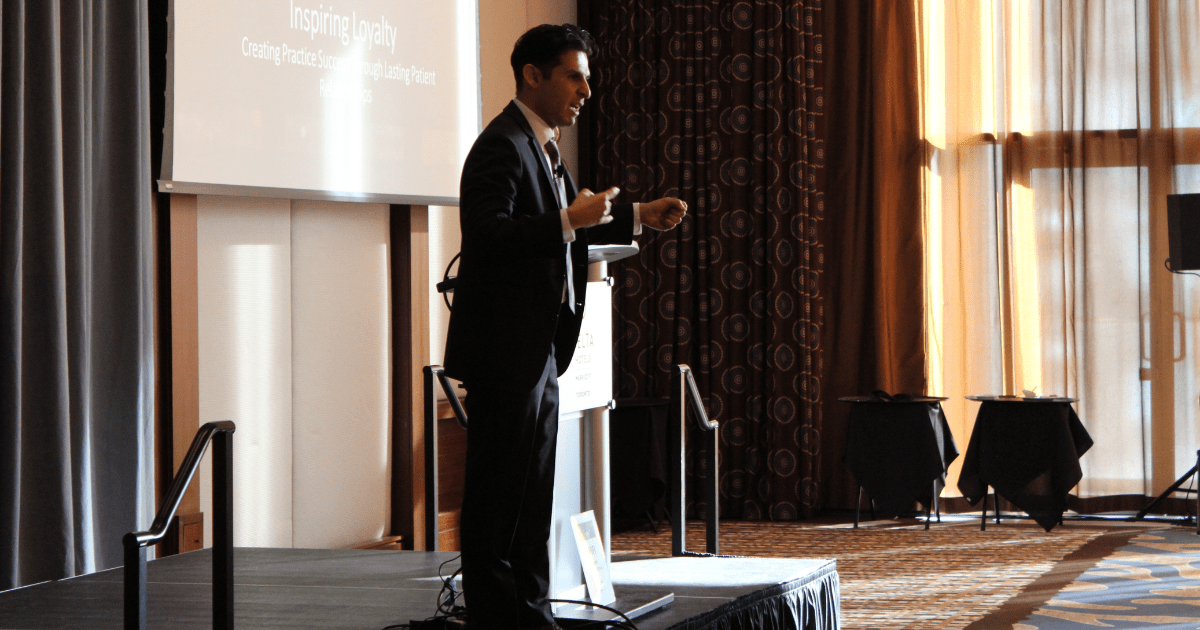Have you ever heard the saying, “If it applies to everyone, it affects no one”? It’s a little nugget of wisdom I always carry with me, especially when it comes to the world of public speaking. But what does it mean? Well, it’s all about how we connect with our audience. When we constantly speak in the third person, presenting problems or solutions in a detached, impersonal way, we risk leaving our listeners feeling disconnected and unengaged.
So, what can we do about it? It’s simple—use first-person examples that might not resonate with everyone but create a personal connection and elicit empathy from those who matter.
Let’s take a look at how it works…

The Pitfalls of Third-Person Speaking
When we communicate and present our ideas, it’s easy to fall into the trap of speaking in the third person. We generalize our statements, saying things like, “It’s crucial that people always do X, Y, and Z.”
But here’s the kicker: when we do that, we’re not inviting our audience to step into our shoes or imagine themselves in the situations we describe. Speaking in generalities is safe, sure, but it often lacks the emotional punch needed to truly resonate with your listeners. And if they don’t feel anything, chances are they won’t act on anything.
So, how can you captivate your audience and drive your message home? First-person anecdotes. These are the heart and soul of effective communication. Instead of telling your audience what they should do in an abstract, third-person manner, you share your personal experiences or stories in the first person. This approach paints a vivid picture in the minds of your listeners, making them not just understand your message logically but feel it on a deeper level.
When you recount your own experiences, you become relatable, human, and real in the eyes of your listeners. They no longer see a distant, detached expert; they see someone who’s been where they are or faced the challenges they’re grappling with. This instantly fosters a sense of connection and empathy.
First-person storytelling isn’t just about fostering empathy; it’s also about creating lasting impact. When people hear stories, especially those from the speaker’s personal experiences, they remember them much more vividly than cold, hard facts. These stories stick in the mind and often drive individuals to take action or change their perspectives. After all, who could forget a compelling, relatable narrative?

Using First Person Wisely
Now, a word of caution. While first-person storytelling is a powerful tool, like any tool, it should be used wisely. You don’t need to have a personal anecdote for every point you make. Instead, strategically sprinkle them throughout your speech to emphasize key ideas, engage your audience, and make your message memorable.
Don’t worry if you’re not a natural storyteller. Public speaking is a skill that can be honed through practice. Start by incorporating first-person anecdotes into your next presentation. Share your experiences, your challenges, and your victories. Over time, you’ll become more comfortable and adept at weaving these stories seamlessly into your speeches.

In conclusion, it’s all about making a connection and inspiring action. So, remember, if it applies to everyone, it affects no one. If you’re speaking in the third person, you might be imparting information, but you’re not touching hearts and minds. Embrace the power of first-person storytelling, and watch your presentations come alive with engagement, empathy, and impact. Your audience will thank you for it, and you’ll become a more effective and memorable speaker.





